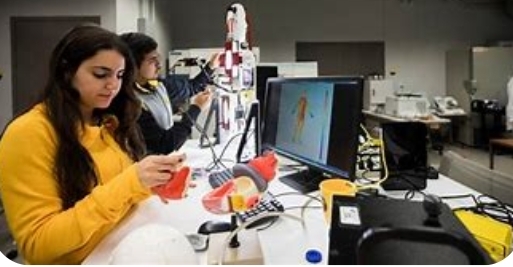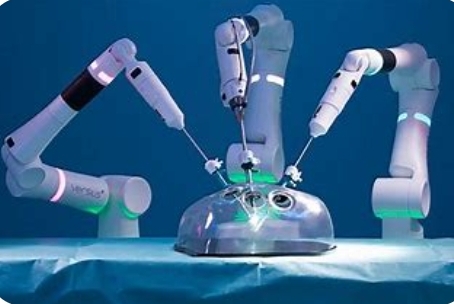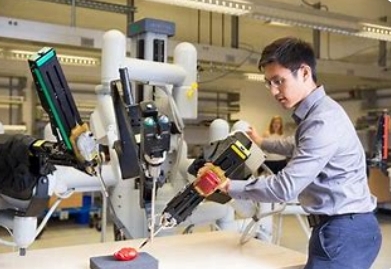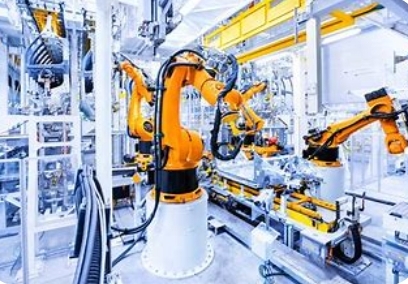Biomedical Robotics: In recent years, robotics has become a field of study that is rapidly evolving. It has recorded a lot of advancements recently.
In Australia, the government has made substantial investments in biomedical robotics, particularly Biomedical Robotics Science. Australia has the second highest influx of students studying robotics in the world and she can boast of multiple notable universities that offer Biomedical Robotics Science.

The question of which university is the best university can only be subjectively addressed and depends on a variety of factors such as faculty expertise, research opportunities, facilities, and personal preferences.
Some of the best universities in Australia known for their commitment and expertise in biomedical robotics science include :
- Monash University
- University of New South Wales (UNSW), Sydney.
- University of Queensland (UQ)
- Queensland University of Technology
- University of Technology Sydney (UTS)
These universities all offer sound research projects in Biomedical Robotics Science. However, it is recommended to find out the specific programs, faculty profiles, research projects, and available resources at each university to determine which one aligns best with your interests and goals.
What Is Biomedical Robotics

Biomedical robotics refers to the application of robotics technology in the field of healthcare and medicine. It combines principles from robotics, engineering, and biology to develop robotic systems and devices that can assist and improve various medical procedures, rehabilitation, diagnostics, and research.
Some examples of biomedical robotics applications include surgical robotics, prosthetics and exoskeletons, rehabilitation robotics, diagnostic robotics, lab automation, etc.
The field of Biomedical Robotics is interdisciplinary. This means that it assembles the elements of robotics, mechanical engineering, electrical engineering, computer science, and biology to advance healthcare and medicine.
Is Robotics Biomedical?
Robotics can be considered to be biomedical when it is specifically applied to the field of healthcare and medicine. This is done by combining the principles and concepts of robotics, mechanical engineering, electrical engineering, computer science to the field of biology, medicine, pharmacy and other healthcare fields and combining them to advance the implementation of healthcare procedures.
Therefore, Robotics may not initially be considered biomedical but when it is applied in medicine and healthcare, it can safely be considered to be so.
YOU CAN ALSO READ : THE BEGINNERS GUIDE TO BIOMEDICAL ENGINEERING 3D PRINTING.
Biomedical Robotics Projects
Biomedical Robotics Projects refer to specific undertakings that combine the principles of Robotics and Biomedical Engineering to address the problems and challenges faced in medicine or to explore new windows of opportunities in healthcare and medicine. It involves developing and applying robotic systems, devices, or algorithms to solve problems, improve patient outcomes, enhance medical procedures, or advance medical research.
Biomedical Robotics Projects include surgical robotics projects, rehabilitation robotics projects, prosthetics projects, assistive robotics projects, lab automation projects, etc. These projects cover wide ranges of applications and research areas. The specific project would depend on your interests, resources, and the expertise available to you.
Biomedical and Robotics Engineering
Biomedical and robotics engineering is an interdisciplinary field that combines principles from biomedical engineering and robotics to address challenges in healthcare and medicine. It focuses on applying robotics technology to develop innovative solutions that improve patient care, enhance medical procedures, and advance medical research.
Biomedical engineering involves the application of engineering principles and techniques to solve problems in biology and medicine while Robotics Engineering involves the design, construction, and operation of robotic systems. It includes areas such as robot kinematics and dynamics, control systems, sensing and perception, human-robot interaction, and autonomous systems.
When biomedical engineering and robotics engineering converge, it forms the field of biomedical and robotics engineering. Professionals in this field leverage their expertise in both disciplines to develop robotic systems, devices, and algorithms that can be used in medical settings. Some examples of biomedical and robotics engineering applications include surgical robotics, rehabilitation robotics, prosthetics and exoskeletons, diagnostic robotics, and lab automation.
Biomedical and robotics engineering plays a vital role in advancing healthcare technology, improving patient care, and enabling new treatment options. It requires a combination of skills and knowledge from both fields, along with a deep understanding of medical applications and patient needs.
YOU CAN ALSO READ : Medical Robots: Everything You Need To Know About Medical Robots
Robotics without Robot Operating System (ROS)
Robotics without ROS (Robot Operating System) is certainly possible, as there are various other frameworks and platforms available for developing and controlling robots. While ROS is a widely used and popular framework for robotics development, it is not the only option.
There are various alternatives to Robot Operating System and they include : Arduino, MATLAB, Robotnik, Microsoft Robotics Developer Studios (MRDS), Gazebo, Python based framework, etc.
There are other frameworks out there which could serve as better alternatives to ROS. However, the above mentioned alternatives are the most commonly used ones. It is important to choose a framework that aligns with your goals of your project, hardware compatibility, and programming expertise.
Biomedical and Robotics Engineering Syllables
The syllabus for a biomedical and robotics engineering program may vary depending on the university and specific program. However, here are some common subjects and topics that you may find in a biomedical and robotics engineering syllabus:
- Biomedical Engineering Fundamentals:
- Introduction to Biomedical Engineering
- Biomechanics
- Biomaterials and Tissue Engineering
- Biomedical Instrumentation
- Medical Imaging and Image Processing.
- Robotics Engineering Fundamentals:
- Introduction to Robotics
- Robot Kinematics and Dynamics
- Robot Control Systems
- Robot Sensors and Perception
- Robot Path Planning and Navigation.
- Anatomy and Physiology:
- Human Anatomy and Physiology
- Biomechanics of Human Movement
- Musculoskeletal System.
- Medical Robotics.
- Surgical Robotics
- Rehabilitation Robotics
- Prosthetics and Exoskeletons
- Assistive Robotics in Healthcare
- Robot-Assisted Diagnosis and Intervention.
- Biomedical Signal Processing:
- Signal Processing
- Techniques for Biomedical Signals
- Electrophysiological Signal Processing (EEG, ECG, EMG, etc.)
- Medical Imaging Processing (CT, MRI, Ultrasound, etc.)
Can Biomedical Science lead to Doctor?
Biomedical science typically refers to the scientific study of human biology, disease processes, and medical research. While biomedical science is a valuable field that contributes to medical advancements, it does not directly lead to becoming a medical doctor (MD) or physician.
To become a medical doctor, one typically needs to pursue a medical degree program, such as an MD or Doctor of Medicine, which is offered by medical schools. Medical education focuses on clinical skills, patient care, diagnosis, treatment, and other aspects of medical practice.
However, a sound background in biomedical science can be beneficial for individuals aspiring to become doctors. Many students pursue a bachelor’s degree in biomedical science or a related field as a pre-medical or pre-healthcare track. The knowledge and skills gained during the study of biomedical science can provide a strong foundation in the biological sciences, which is relevant to medical education.
What Career does Biomedical Science lead to?
A degree in biomedical science can open up various career opportunities in the field of healthcare, research, and beyond.
As stated earlier, Biomedical Science does not grant anyone direct access to becoming a medical Doctor or give anyone an automatic certification as a trained professional in another field of study. However it can open up various career paths to take. Some of these career paths include : Biomedical Research, Clinical Research, Pharmaceutical or Medical Device Sales Representative, Quality Control/Quality Assurance Specialist, Biomedical Engineering, Healthcare Consultancy and Administration, Public Health Officer, Medical Writing ,etc.
Which Robot is used in the Medical Field?
Robots are increasingly being used in various applications within the medical field to assist with patient care, surgical procedures, rehabilitation, diagnostics, and more.
Some of the robots commonly used I. The medical field includes surgical robots, rehabilitation robots, pharmacy robots, telepresence robots, lab automation robots, etc.
As robotics technology advances and is increasingly applied in the medical field, new robotic systems are developed to match the growing needs in healthcare and medicine.
Biomedical Engineering Canberra
Canberra, the capital city of Australia, is home to several universities and institutions that offer programs and research opportunities in biomedical engineering. Canberra is also the home to various notable institutions that provide programs for biomedical engineering to students. Some of these institutions include :
- Australian National University (ANU)
- University of Canberra
- Australian National Fabrication Facility (ANFF)
- Canberra Hospital
These institutions among others make available vast research areas and programs on biomedical engineering to students.
Where is Robotics Used in Society?
As a growing area and field of study. Society has begun to recognize the importance and usefulness of robotics and how it can be applied to various fields to achieve improvement. Robotics plays a very vital role in society and can be applied in various areas such as healthcare and medicine, manufacturing and industrial automation, agriculture and farming, logistics and warehousing, defense and security, education and research, space exploration, entertainment, environmental monitoring and exploration, domestic and personal use, etc.
YOU CAN ALSO READ : UNDERSTANDING HOUSEKEEPING ROBOTS
Who is a Robotics Scientist?

A robotics scientist is a professional who specializes in the field of robotics, which involves the design, development, and study of robots and autonomous systems. They have expertise in various aspects of robotics, including mechanical engineering, electrical engineering, computer science, artificial intelligence, and control systems.
Some key responsibilities of a robotics scientist include :
- Research and development
- Special designs and integration
- Programming and Control
- Sensor integration and perception
- Testing and evaluation
- Collaboration and teamwork
- Teaching and education
Overall, a robotics scientist is a highly skilled professional who combines knowledge from multiple disciplines to advance the field of robotics and develop innovative robotic systems.
Read more: In-Depth Benefits Of Autonomous Mobile Robots For humans And Society At large
How is Robotics Used in Agriculture?
The agricultural industry has benefited a lot from Robotics with that latter offering new solutions to improve productivity, efficiency, and sustainability. Some of the ways in which robotics have improved agriculture is in the provision of autonomous farm vehicles, effective and advanced weed and pest control systems, harvesting of farm produce and fruit and vegetable picking, greenhouse automation, dairy farming automation, etc.
By integrating robotics into agriculture, farmers can increase productivity, reduce labor costs, optimize resource usage, and minimize environmental impact.
Why are Robots used in Manufacturing?

Robotics and robots can now be applied to various fields in life to ensure improvement and increased productivity while maintaining efficiency. One of these sectors is the manufacturing sector. Robotics is extensively used in manufacturing due to several benefits it offers. Some of these benefits include increased productivity and efficiency, improved quality and consistency of products, enhanced safety of workers and workplaces, reduction in cost of production, flexibility and adaptability, effective handling of complex or delicate operations, handling of monotonous and boring tasks to allow workers focus on utilizing the skills and expertise in areas that require human judgment and creativity.
Conclusion
The importance of robotics, its quick growth and development and increased significance as a field of study can not be over emphasized. Robotics can potentially be applied to almost every field of study and human endeavor and it only keeps getting better. Robotics could thus be seen as the black gold of all professions and it is recommended to anyone who wishes to grow and make use of thel windows of opportunity that are opening up in recent times.






